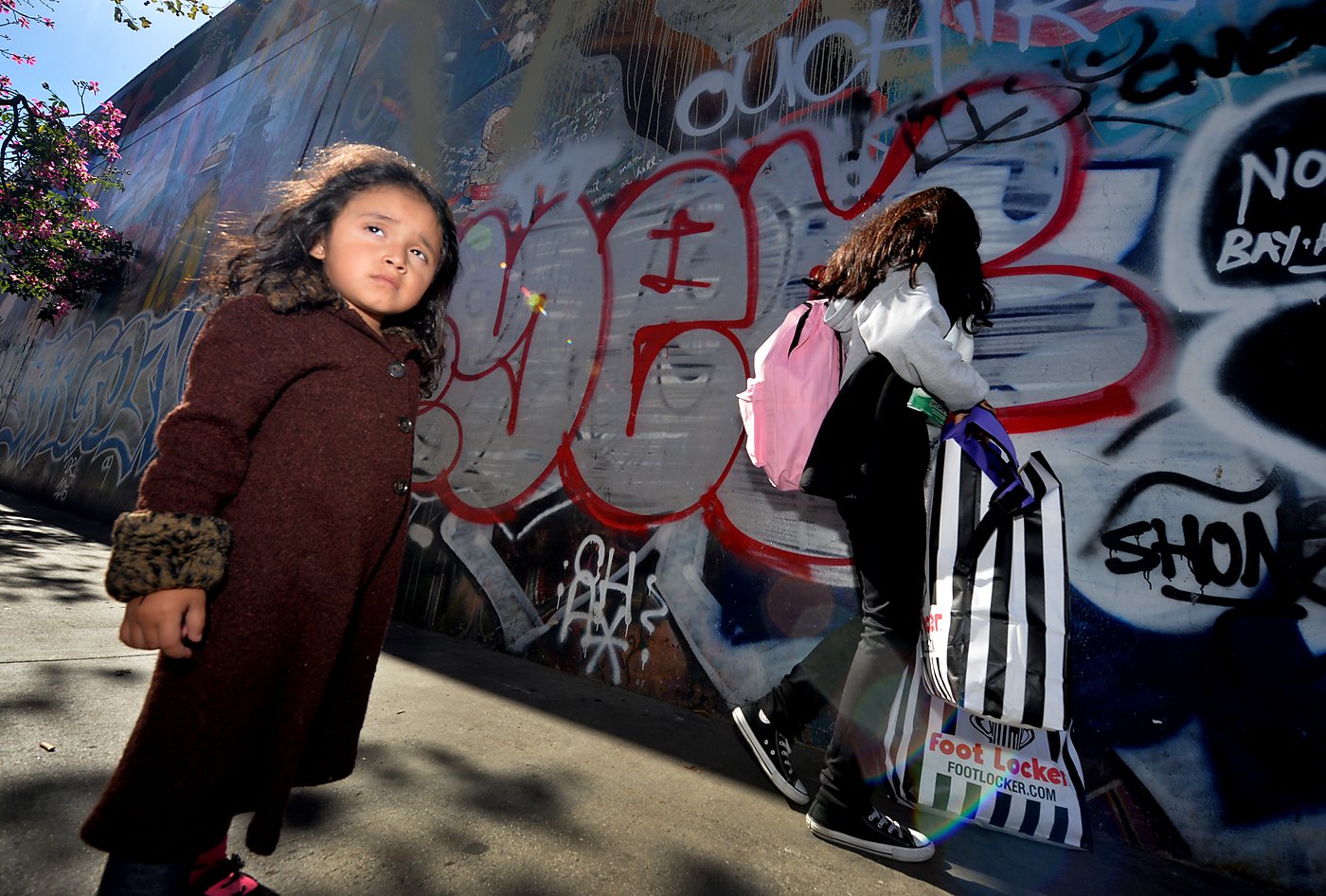Introduction
COVID-19 has been a tragedy for California. More than 4 million Californians have contracted the disease, and over 64,000 have died from it. And beyond the cost of illness and death, the pandemic and the state’s actions to contain it have devastated California’s economy. Low-income and minority Californians in particular have felt the brunt of both the virus and the economic impact.
Yet if COVID-19 exacerbated and exposed the state’s poverty problems, it was not the cause of them. Even before the pandemic, far too many Californians struggled to get by.
This in a state that (even with the pandemic) has relatively strong economic growth, pockets of vast wealth, and an extensive social welfare system. California has the largest economy of any state. In fact, with a gross domestic product of nearly $3 trillion, if California were a country, its economy would be the world’s fifth largest, behind only the United States as a whole, China, Japan, and Germany. The state’s real gross domestic product grew 3.4 percent in 2019,1 and while its unemployment rate was slightly above the national average, it still was only around 4.1 percent.2 And the state is home to more than one million millionaires, including 189 of the United States’ 724 billionaires.3 Clearly there is a mismatch between the state’s growth and wealth and the struggles of many of its citizens.
Before COVID-19
In 2019, before the pandemic, almost 7 million Californians lived below the poverty level, according to the U.S. Census Bureau’s Supplemental Poverty Measure. That is roughly 17.2 percent of the state’s population. This gave California the highest poverty rate in the nation, considerably higher than states such as Louisiana and Mississippi that are typically associated with high levels of poverty (see Figure 1).
A more specific measure, the California Poverty Measure (CPM), developed jointly by the Stanford Center on Poverty and Inequality and the Public Policy Institute of California, improves upon the Supplemental Poverty Measure by taking into account regional differences in housing prices and the role of government programs specific to California. The CPM shows only a slight reduction in poverty from California’s many government transfer programs such as the California Work Opportunities and Responsibility to Kids (CalWORKs) and CalFresh. It also indicates the substantial reduction in poverty that would result from reducing the state’s notoriously high housing costs. According to the CPM, roughly 35.2 percent of Californians live in or near poverty.4
The state’s high cost of living plays a significant role in California’s poverty rate. Under the CPM, considering the state’s cost of living, the thresholds (for San Francisco, with its high housing costs) are $29,500 for a household with a single parent and one child and $37,400 for a family of four.5 The state’s low-cost and midrange counties are also above the national levels (see Table 1).
The existence of so much poverty amid such widespread wealth highlights the high level of economic inequality in the state. Using the traditional Gini coefficient measure of economic inequality, California ranks as the nation’s fifth most unequal state (see Figure 2).6 This is particularly problematic because much of this inequality stems from government policies, both historical and ongoing.
In the last few years before the pandemic, inequality in California had begun to decline, primarily because of rising wages for low-income workers. For example, in 2019, families in the lowest decile of earnings had incomes 34 percent higher (adjusted for inflation) than in 2014. Meanwhile, earners in the top 10 percent saw their incomes grow by only 18 percent over the same period. As a result, the gap between the two groups shrank by 12 percent.7 Unfortunately, COVID-19 threatens to reverse this progress.
Another notable area of concern is the lack of economic mobility for low-income Californians. Most California children who grow up in poverty will earn low incomes as adults.8 A 2020 study by the Urban Reform Institute found disparities in economic mobility among races. African Americans and Latinos in California metropolitan areas such as San Jose, San Francisco, and Los Angeles experience some of the least upward mobility in America.9
COVID-19’s Effects
COVID-19 and its associated economic fallout have only made poverty in California deeper, more widespread, and more painful. First, the virus has been more prevalent in low-income communities, both because many low-wage workers work in jobs that prevent sheltering at home and because housing costs often force large extended families to live together, facilitating the spread of COVID-19.10
A California Healthline study found that in the first nine months of the pandemic, infection rates were as much as three times higher in communities with poverty rates higher than 20 percent, compared to communities with poverty rates lower than 10 percent. Even within the same city, neighborhoods that are only a few miles apart have had vastly different infection rates that varied by income. For example, the 94621 zip code area, in the city of Oakland, had an infection rate of 54 confirmed cases per 1,000 residents as of late November 2020. In comparison, the 94618 zip code area, covering the Rockridge and Upper Rockridge neighborhoods a few miles north of Oakland, and where only 5 percent of residents live below the poverty line, had only 4 confirmed infections per 1,000 people over the same period.11 See Figure 3 for more examples.
And given the high incidence of poverty in minority communities, it is no surprise that African Americans, Latinos, and Pacific Islanders all have higher rates of infection than do white Californians (see Figure 4).12
Second, beyond the illness and lost lives, the economic effects of the pandemic for Californians who are poor have also been grim. Historically, economic slowdowns nearly always hit low-income families and communities hardest. With little savings, precarious attachment to the labor market, and limited access to new opportunities, low-income families are the least prepared for riding out such downturns. COVID-19’s economic consequences have been particularly burdensome for these families. In December 2020, more than a third of low-income Californians surveyed said that their personal finances were worse than a year before.13
Job sectors with a high proportion of low-wage workers, such as restaurants, entertainment, and tourism, have had the largest declines in employment. Estimates found that business sectors with the highest percentage of low-wage workers suffered job losses in the range of 24 percent at the height of the pandemic versus 5–6 percent among businesses with a high percentage of higher-earning employees.14 During the worst months of the pandemic, unemployment rates for those with incomes under $30,000 reached as high as 30 percent, compared to 5 percent for families with incomes in excess of $150,000.15 Both the size of the job losses in the low-wage sectors and the divergence in impact between low- and high-wage employment have been substantially worse than during the Great Recession of 2008.
Moreover, many people who still had jobs suffered reductions in their hours or other reductions in earnings. Among households with incomes below $40,000, 69 percent reported that someone in their household lost a job, had reduced hours, or had a reduction in wages since the start of the pandemic.16 Latinos, Asian Americans, and African Americans were all more likely than white Californians to fall into this category (see Figure 5).17
Employment and income decline attributable to the pandemic appear to have been particularly severe for women and female-headed households. Before COVID-19 hit, men and women in California had similar rates of labor force participation, but with the pandemic, a significant gap has opened, with women 3 percent less likely to be employed than men. The evidence also suggests that this effect has been greatest for women with low incomes and women who are heads of household.18
As a result, roughly one-third of low-income Californians reported in December 2020 that they had been unable to pay a monthly bill within the past year, 35 percent reported missing a rent or mortgage payment, and 43 percent reported having to use a food bank.19
As California reopens its economy, we should see a reduction in many of these poverty metrics. Recall that in the Great Recession, California lost roughly 1.3 million jobs but had fully recovered by 2014.20 Many economists believe that because the current economic downturn results from an extraordinary outside circumstance combined with unprecedented government action rather than underlying weakness in the economy, the bounce back will be much swifter. On the other hand, the economic rebound that we have seen so far has been uneven, leading many economists to describe it as a “K‑shaped recovery” (see Figure 6), with a far quicker return to normal for higher-income workers.21
Moreover, some economic changes brought about by the pandemic may be permanent, such as
- the shift toward working from home,
- the decline in business travel with its effects on the hospitality industry,
- further moves toward automation,
- greater consolidation of businesses and a reduction in the viability of small and family-owned enterprises,
- a reduction in job security and an increase in “gig work,” and
- an increase in the wage premium on education and technical skills.
Both the government and those living in poverty will be forced to adapt to this changing economic environment. It therefore becomes all the more critical that California target its efforts at economic recovery toward those people and communities who have been hardest hit and are most likely to suffer long-term consequences.
Who Are California’s Poor?
Poverty is not evenly distributed across California, and people of color are far more likely to live in poverty than white residents. Roughly 23 percent of Latino families have incomes below the poverty line, as do more than 18 percent of African American households and about 16 percent of Asian American households, compared to a little under 13 percent of white California households (see Figure 7).22
Poverty rates are much higher in female-headed households, at roughly 32 percent.23 Childhood poverty is also widespread, with more than one in five California children living in families with incomes below the poverty level.
There is also significant geographical variation in rates of poverty and inequality across the state. Los Angeles County has the state’s highest poverty rate, with more than a quarter of residents living in poverty (using the CPM). That amounts to more than 2.5 million people. The county’s “deep poverty rate,” encompassing the poorest of the poor, is also the state’s second highest, at 6.7 percent. Other high-poverty regions include Orange County and the Central Coast. The state’s lowest rate of both poverty and deep poverty is in the Sacramento area, followed by the San Francisco Bay Area (see Figure 8).24
However, the variation in poverty rates between neighborhoods that may be only a few miles apart can be significant. For instance, between 2016 and 2018, the Manhattan Beach and Redondo Beach area had a poverty rate of around 7.5 percent. Meanwhile, its neighbor to the east, the Gardena and Lawndale area, had a poverty rate hovering around 25.3 percent. Less than five miles separate their city halls. Communities with high minority concentrations also tend to have much higher poverty rates, reflecting the higher incidence of poverty among those populations and the state’s long history of residential segregation. For example, between 2016 and 2018, Santa Clara, which is 88 percent white, had a poverty rate of 7.7 percent, while majority-minority Oakland had a poverty rate of 34.9 percent.25

Three-year-old Saria Amaya, left, waits with her mother after receiving shoes and school supplies during a charity event to help more than 4,000 underprivileged children at the Fred Jordan Mission in the Skid Row area of Los Angeles on October 2, 2014. Skid Row reportedly contains one of the largest populations of homeless people in the United States.
MARK RALSTON/AFP via Getty Images
Reducing Poverty
California spends more than $66 billion annually on social welfare programs, and the federal government adds an additional $120 billion on programs serving low-income Californians. Roughly one in six California households receives some form of government assistance. The biggest and most widespread of these programs include CalWORKs (the state’s administrator of the federal Temporary Assistance to Needy Families program), MediCal (Medicaid), CalFresh, the Special Supplemental Nutrition Program for Women, Infants, and Children, housing assistance, the federal earned-income tax credit (EITC), and its state counterpart CalEITC (see Figure 9). Although the largest portion of funding for most of these programs comes from the federal government, the state ranks seventh in per-capita welfare spending.
Traditionally, efforts to reduce poverty have targeted material deprivation. These initiatives include ensuring that the poor have access to adequate food, shelter, health care, and so on. That is what the previously mentioned programs are designed to do. If one were to look at Maslow’s hierarchy of needs (see Figure 10), most anti-poverty efforts focus heavily on the bottom of the pyramid. And, in this very narrow regard, such efforts have been successful in reducing poverty rates. Estimates show that California’s poverty rate would be nearly 18 percent higher in the absence of these programs (see Figure 11).26
But we should also consider the counterfactual. What actions would the poor have taken in the absence of welfare, and how would their lives have changed as a result? We know that incentives matter, and there is a vigorous debate about the degree to which the availability of welfare creates incentives toward poverty-inducing behavior by discouraging work and encouraging nonmarital births. Most contemporary scholarship, such as that by Robert Moffitt of Johns Hopkins University, points to a real but very modest negative effect of these programs on human behavior.27 Research for the Cato Institute has suggested that someone leaving welfare for an entry-level job would likely suffer an initial loss of income. However, this report does not address the likely long-term impact, which could well be more positive.28
Still, looking at the totality of available evidence, it is hard to argue that welfare spending has not contributed to the decline in the material deprivation and hardships of poverty. Surveying the available literature, Rebecca Blank of the University of Wisconsin concludes that “transfer programs unambiguously make people less poor.”29
But a long-term solution to poverty requires greater aspirations. We should seek to ensure not only that people are fed and housed but that they rise as far as their talents can take them.
Perhaps The Economist put it best:
If reducing poverty just amounts to ushering Americans to a somewhat less meager existence, it may be a worthwhile endeavour but is hardly satisfying. The objective, of course, should be a system of benefits that encourages people to work their way out of penury, and an economy that does not result in so many people needing welfare in the first place. Any praise for the efficacy of safety nets must be tempered by the realization that, for one reason or another, these folks could not make it on their own.30
Yes, California’s anti-poverty policies should ensure that people have their basic needs met, but those policies should also enable every Californian to become a fully actualized being, capable of being all that they can be.
It is also important to recognize that, contrary to stereotypes, low-income Californians generally maintain a strong work ethic. For instance, focus groups conducted by the Business Roundtable repeatedly found that low-income Californians “indicated a willingness to work hard and do not want ‘something for nothing’ from the government.”31 In fact, nearly 80 percent of low-income California families with at least one working-age adult had someone in the family who was working, and 58 percent had someone who was working full time.32 In addition, low-income Californians showed a strong interest in investing in their children’s future and generally believed that their children will be better off than they are.33 What is blocking their escape from poverty is not a lack of desire but a lack of opportunity.
In proposing a better way to fight poverty, we should not blindly support cutting programs for the sake of cutting. Nor should we assume that what California is doing is working and that the state should simply spend more. Not every existing program is accomplishing its purpose. Debates over funding tend to be sterile, partisan, and zero-sum affairs. This is likely to be even more true given the fiscal constraints that the state will be under post-pandemic. Such questions were largely avoided in developing this report.
Therefore, we should ask whether there are policy alternatives that would ameliorate the suffering of those living in poverty at least as well as existing efforts while also creating the conditions that would enable people to live fulfilled and actualized lives. Is it possible to achieve or even expand on the poverty reductions realized by current policies without the negative side effects accompanying such policies? Can we fight poverty in a way that is compatible with the economic growth that will reduce poverty in the future? Finally, can we fight poverty in a way that empowers Californians living in poverty to control their own lives?
The recommendations that follow are designed to provide Californians living in poverty with that opportunity.
Recommendations Summary
After listening to a broad cross-section of social justice and anti-poverty activists, along with business, political, and other key stakeholders, as well as to the poor and working poor themselves, Cato’s Project on Poverty and Inequality in California has developed a set of policy recommendations designed to reduce poverty and empower low-income Californians.
Importantly, our conversations with Californians on the frontlines of anti-poverty efforts have confirmed our belief that any effective long-term approach to fighting poverty in California must go beyond simply providing public assistance. Reform must establish an environment that enables every resident of the state to flourish, become self-supporting, and rise as far as their individual talents can take them. That need has only grown more important because of the COVID-19 pandemic and the economic disruption that has accompanied it.
Unfortunately, far too often, existing laws, policies, and regulations trap many Californians in poverty, preventing them from fully participating in the benefits of the state’s economy. Therefore, most of our recommendations are focused on reforming these barriers to economic participation, including policy reforms concerning housing and homelessness, the criminal justice system, education, welfare, and regulatory barriers to an inclusive economy.
Housing and Homelessness
Any effort to address poverty in California must deal with the state’s lack of affordable housing. The median home price in California now tops $500,000, while the median rent for a two-bedroom apartment exceeds $2,300 per month, nearly 60 percent above the national median. In some cities such as San Francisco and Los Angeles, average monthly rent exceeds $3,000. These high costs are the result of basic economics: demand badly exceeds supply. Estimates suggest that California needs at least 3.5 million new housing units just to meet currently projected demands.
At the same time, the state faces a raising epidemic of homelessness. There are an estimated 130,000 homeless people in California, including more than 28,000 in the San Francisco Bay Area and 60,000 in Los Angeles County. Even often overlooked cities like San Diego face a crisis, with more than 8,000 homeless. By some calculations, more than 47 percent of all unhoused homeless in the United States live in California. We are witnessing a major human tragedy.
At the heart of these twin crises lies a plethora of government regulations that make it harder to build housing or provide services for the homeless.
Recommendations
- End exclusionary zoning.
- Move to an “as by right”/ministerial approval process for new construction.
- Restructure the California Environmental Quality Act (CEQA) to limit the use of lawsuits to strict environmental criteria.
- Standardize and cap building fees.
- Reduce the power of local agency formation commissions.
- Reverse efforts to criminalize homelessness.
- Strengthen California’s conservatorship laws while continuing to protect civil liberties and individual autonomy.
- Expand and extend CEQA exemptions for homeless housing/shelter projects. Allow emergency shelters in any zone, without a conditional use or discretionary permit.
Criminal Justice Reform
Over recent years, California has made progress toward reforming its criminal justice system. Despite these reforms, the system continues to burden communities of color and those with low incomes. Around 182,000 Californians remain behind bars, many for nonviolent offenses. Perhaps more significantly, as many as eight million Californians have a criminal record that can make it difficult to find employment and housing or take advantage of educational opportunities.
Reforming the criminal justice system is, in part, a matter of fairness, given the system’s long-standing biases against low-income people and communities of color. But criminal justice reform will also have a significant practical effect on poverty.
Recommendations
- Resist any effort to roll back recent criminal justice reforms, including Propositions 47 and 57.
- Take additional steps to reduce overcriminalization, including the decriminalization of victimless crimes, further reduction in penalties for nonviolent offenses, and continued moves to the greater use of restorative justice.
- Curtail the use of fines and fees as punishment, especially in cases where they pose a disproportionate hardship on low-income offenders.
- Establish a mechanism to automatically expunge criminal records after a designated period for those who do not reoffend.
- Upgrade programs within the prison system to prepare offenders who have completed their sentence for transitioning into society.
Education Reform and Workforce Development
Access to a quality education is vital to escaping poverty. Yet despite spending $12,500 per student, California’s public schools underperform compared to nationwide averages—and particularly fail low-income communities. The type of innovation necessary to transform California’s education system is unlikely to occur in a system dominated by a government-run monopoly. At the same time, it is unfair to keep low-income and minority students trapped in schools that fail to meet their needs. Schools should exist to serve the needs of children and their parents, not the schools themselves, the teachers, or the school system. California schools should be opened to greater competition, parental control, and choice.
Recommendations
- Remove barriers to the growth of charter schools and other alternatives to traditional education models. Specifically, lawmakers should eliminate the Local Control Funding Formula funding gap between districts and high-need charter schools.
- Establish a tuition tax credit program to finance scholarships for low-income families to attend the school of their choice.
- Restructure future pension obligations to shift more resources to the classroom.
- Increase emphasis on vocational and technical education and make greater use of apprenticeships.
Welfare Reform
California maintains a robust social safety net. On a combined basis, federal and state anti-poverty programs spend more than $100 billion every year in California to fight poverty. That spending has reduced poverty rates from what they would be in the absence of those programs. But while mostly successful in reducing material poverty, California’s welfare system is much less successful at reducing dependency and assisting low-income Californians to attain prosperity. In particular, eligibility rules for many programs can discourage work, savings, child support, and other steps that can help those living in poverty take greater control over their lives and situations.
Recommendations
- Abolish asset tests for California Work Opportunity and Responsibility to Kids, or CalWORKs, and other programs.
- Expand welfare diversion programs.
- Prioritize cash payments within the social welfare system over in-kind benefits or indirect payments to vendors. To the degree possible, restructure existing social welfare programs and reallocate existing resources into an expanded state EITC.
Economic Inclusion
California has experienced strong economic growth for many years, averaging 5.8 percent for the past five years. A growing economy is essential to reducing poverty. Therefore, California should generally pursue tax and regulatory policies that encourage continued growth.
But economic growth can have a significant effect on poverty reduction only if all Californians can fully participate in the opportunities it offers. Economic growth will do little to reduce poverty if all the benefits from that growth accrue solely to those at the top of the economic scale.
All too often, government regulations can block the poor from joining in on those benefits, making it more difficult to get a job or start a business. However well-intentioned, government actions can create a two-tier economic system that locks out the poor while protecting those with more connections or resources to navigate the system.
Recommendations
- Repeal occupational licensing that is not strictly necessary to protect health and safety.
- Rethink occupational zoning.
- Deregulate childcare to reduce costs and increase supply.
- Reduce barriers to entrepreneurship and job creation.

This work is licensed under a Creative Commons Attribution-NonCommercial-ShareAlike 4.0 International License.








